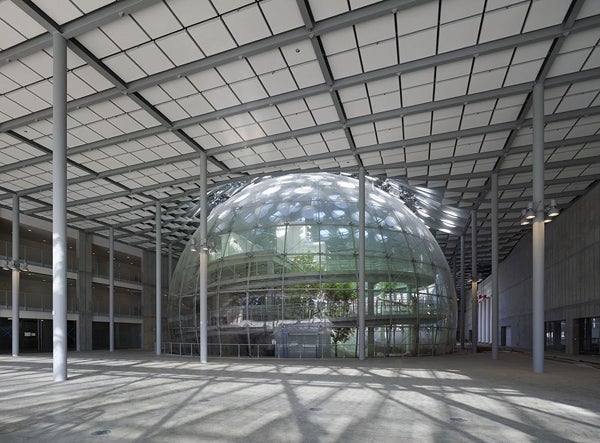The Living Museum
For a newly minted museum in San Francisco, the green architecture is the main exhibit

From a bird’s-eye view, the domes of the California Academy of Sciences, set to open in the fall, bulge out of the ground like giant scoops of green ice cream. These undulating hills built into the museum’s 2.5-acre, flora-covered roof integrate the building into the green space of surrounding Golden Gate Park. They also conserve energy, since the roof insulates and ventilates the 400,000-square-foot museum below.

Rooted in Sustainability
Designed by renowned Italian architect Renzo Piano, whose works include the landmark modern-art museum Centre Pompidou in Paris, the $484-million structure will most likely be the largest public building ever to qualify for the U.S. Green Building Council’s “platinum” LEED (Leadership in Energy and Environmental Design) rating. The designation, so far held by just 70 buildings worldwide, is the highest honor in green construction.
Beneath the roof, museumgoers will find a natural-history museum, a planetarium, a rainforest with free-flying birds, a coral reef inhabited by 4,000 fish, and an aquarium filled with saltwater pumped in from the Pacific Ocean. The most influential display, though, may well be the marriage of the museum’s physical design with its educational mission. “It’s not about dusty stuffed animals,” says executive director Greg Farrington. “It’s about human survival and living in harmony on planet Earth.”
Check out our animated tour, below, and launch our photo gallery of the world’s greenest museum here.

The Living Roof

The Living Roof

Ventilation

Vents

Retractable Roof

Lighting

Multi-Use Lighting

Materials

Structure

Water Use

The Living Museum